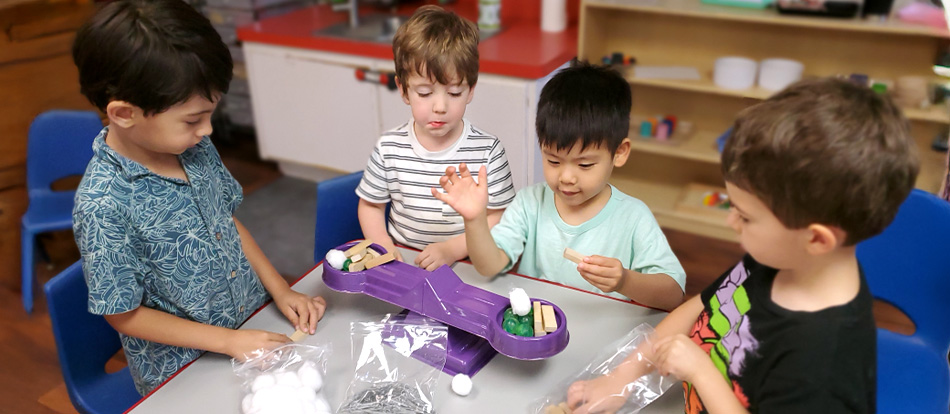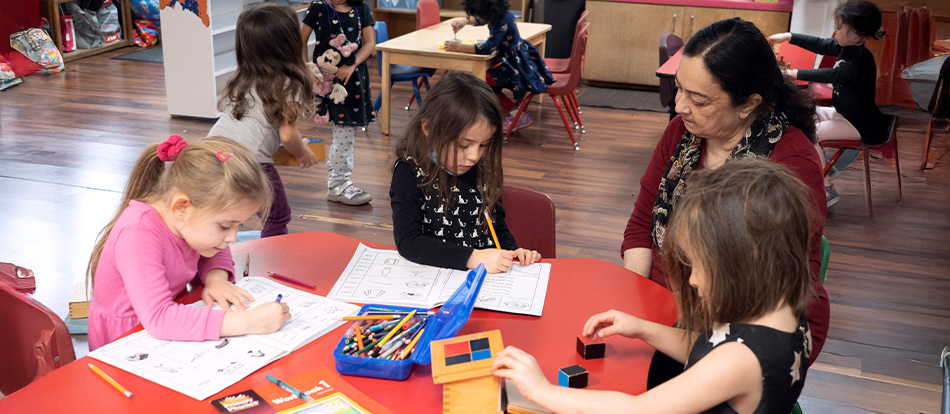Parents and educators strive to nurture children’s social, emotional, and academic growth. Mixed-age learning environments, where children of varying ages share a classroom, offer a dynamic approach that progressive schools, such as Montessori, facilitate. Here’s why this model is transformative.
Understanding the Montessori Philosophy
In a mixed-age (or multi-age) classroom, children of different ages learn together, such as 3- to 5-year-olds in a preschool setting. Rather than rigid age-based grouping, teachers tailor instruction to each child’s unique pace, fostering peer learning where younger children observe older peers and older children reinforce skills by guiding others.

1. Cultivates Mentorship and Leadership
Mixed-age settings naturally encourage older children to mentor their younger peers, fostering leadership, empathy, and confidence. Younger children benefit from relatable role models, which enhances their learning through observation and guidance.
At-home tip: Have a 6-year-old read to a 4-year-old or teach them a simple game to build skills and independence for both.
2. Promotes Social-Emotional Development
By reducing competition and emphasizing collaboration, mixed-age groups create a supportive atmosphere. Younger children feel nurtured, not judged, while older ones develop empathy and caregiving skills, leading to higher self-esteem and lower academic stress.
3. Enhances Cognitive and Language Skills
Younger children absorb advanced vocabulary and concepts from older peers, boosting comprehension and critical thinking. Older children reinforce their knowledge by explaining ideas, creating a dynamic learning cycle that mirrors family or community interactions.

4. Supports Continuity and Personalized Learning
Looping, where children stay with the same teacher for multiple years, fosters strong relationships and enables tailored instruction. This stability allows children to progress at their own pace without rigid grade-level constraints.
5. Prepares for Real-World Interactions
Mixed-age classrooms reflect diverse, real-world settings, such as families or workplaces. Children learn to collaborate across age groups, developing essential skills in tolerance, leadership, and communication that are crucial for life.

6. Sparks Cooperative Play and Creativity
Mixed-age play fosters imaginative and cooperative scenarios, as older children create complex games that younger ones eagerly join, thereby promoting communication, empathy, and creative problem-solving.
7. Fosters Inclusivity and Emotional Resilience
Multi-age environments normalize diverse learning paces, thereby reducing the stigma surrounding individual differences. Children learn to value everyone’s strengths, building emotional intelligence and resilience in a compassionate and inclusive setting.

Frequently Asked Questions
Will older children fall behind academically?
No. Studies show older children in mixed-age settings perform equally well academically while gaining social-emotional benefits from mentoring roles.
Will younger children feel overwhelmed?
In well-structured classrooms, younger children thrive by emulating older peers, gaining confidence and social ease.
How do teachers manage diverse ages?
Teachers use individualized plans and peer support, drawing on proven methods from Montessori and similar approaches to meet each child’s needs.
Practical Tips for Parents and Educators
- Foster mixed-age play with siblings, cousins, or friends.
- Advocate for looping to maintain teacher-student continuity.
- Seek programs with intentional multi-age grouping.
- Model inclusivity by celebrating the diversity of ages and abilities.

The Mixed-Age Advantage
Mixed-age learning environments nurture empathy, leadership, and academic growth while fostering strong social bonds. By valuing each child as a mentor, peer, and learner, this approach creates a vibrant and inclusive space for lifelong development. Embracing mixed-age learning at school or home helps every child flourish.


